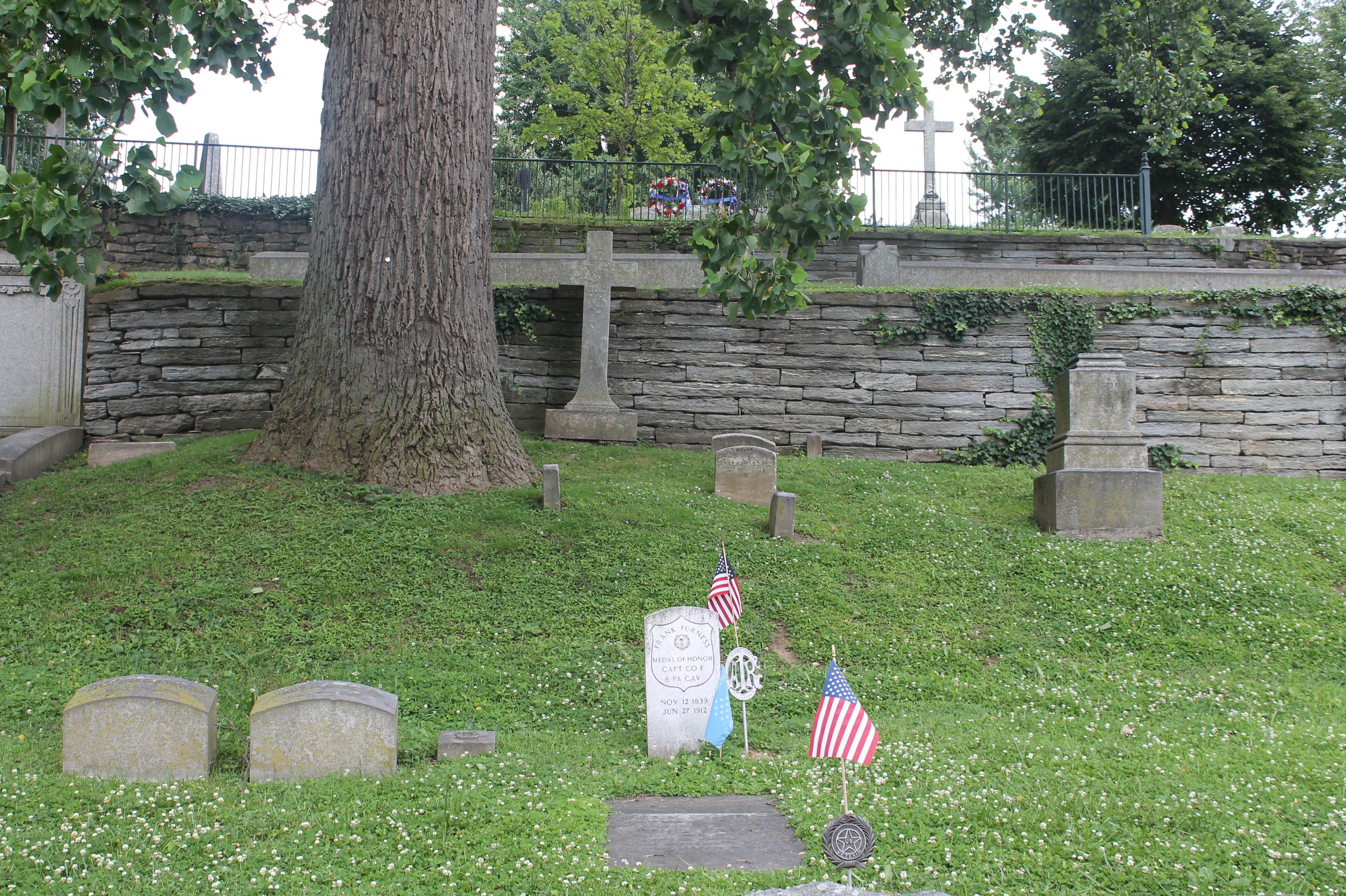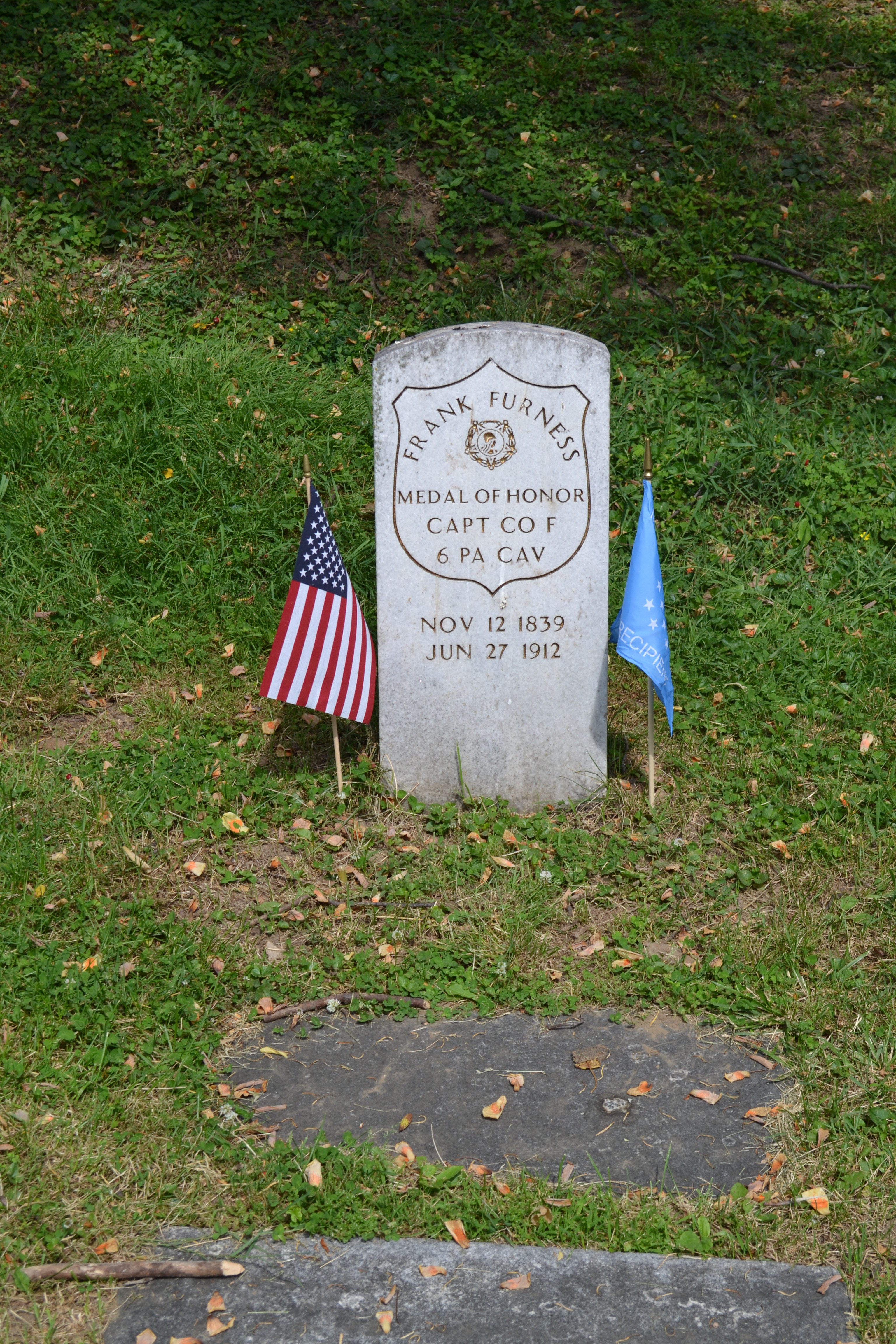Frank Heyling Furness was better known as a major Philadelphia architect between 1870 and 1900. He designed over 400 buildings including banks, churches, synagogues, rail stations for the Pennsylvania and the Baltimore & Ohio Railroads, and numerous stone mansions for wealthy businessmen in Philadelphia and along Philadelphia's Main Line, as well as a handful of commissions at the New Jersey seashore, Washington, D.C., New York state, and Chicago, Illinois.
Furness studied architecture in France, as there were no schools of architecture in the United States immediately after the Civil War. His bold, heavy, eclectic Gothic style was akin to John A. Roebling's famous Brooklyn Bridge with its imposing Gothic towers.
Furness died on June 27, 1912, at his summer home, Idlewild, which he designed.
His first major work, the Philadelphia's Academy of Fine Arts, is still standing and is in use as a teaching institution at North Broad Street at Cherry Street, Philadelphia. During the 1930s, the Victorian-era style of architecture fell into disfavor, with a more streamlined style taking hold for buildings and automobiles. Between the 1930s and the 1950s, over half of Furness' buildings met with the wrecking ball. Almost all of his residential mansions were demolished in the 1940s, 1950s, and 1960s as fuel oil prices rose, but there are several splendid examples of his residential work still in existence along Philadelphia's Main Line and in Center City Philadelphia.
Frank Heyling Furness was better known as a major Philadelphia architect between 1870 and 1900. He designed over 400 buildings including banks, churches, synagogues, rail stations for the Pennsylvania and the Baltimore & Ohio Railroads, and numerous stone mansions for wealthy businessmen in Philadelphia and along Philadelphia's Main Line, as well as a handful of commissions at the New Jersey seashore, Washington, D.C., New York state, and Chicago, Illinois.
Furness studied architecture in France, as there were no schools of architecture in the United States immediately after the Civil War. His bold, heavy, eclectic Gothic style was akin to John A. Roebling's famous Brooklyn Bridge with its imposing Gothic towers.
Furness died on June 27, 1912, at his summer home, Idlewild, which he designed.
His first major work, the Philadelphia's Academy of Fine Arts, is still standing and is in use as a teaching institution at North Broad Street at Cherry Street, Philadelphia. During the 1930s, the Victorian-era style of architecture fell into disfavor, with a more streamlined style taking hold for buildings and automobiles. Between the 1930s and the 1950s, over half of Furness' buildings met with the wrecking ball. Almost all of his residential mansions were demolished in the 1940s, 1950s, and 1960s as fuel oil prices rose, but there are several splendid examples of his residential work still in existence along Philadelphia's Main Line and in Center City Philadelphia.
Inscription
MEDAL OF HONOR
CAPT CO F
6 PA CAV
Family Members
Advertisement
See more Furness memorials in:
Explore more
Sponsored by Ancestry
Advertisement














